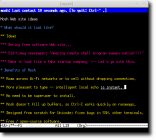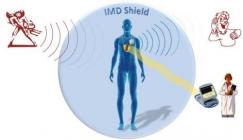Security & Privacy

Having a secured site is an integral part of offering quality service, when a customer does not have to worry about downtime or important financial information being stolen when accessing your site; they are most likely to obtain product or service from you.
Wi-Vi: See Through Walls with Wi-Fi SignalsDina KatabiWi-Vi is a new technology that enables seeing through walls using Wi-Fi signals. It allows us to track moving humans through walls and behind closed doors. Wi-Vi relies on capturing the reflections of its own transmitted signals off moving objects behind a wall in order to track them. Wi-Vi's operation does not require access to any device on the other side of the wall. |
 CHRISTINE DANILOFF/MIT |
Mosh: mobile shellHari BalakrishnanRemote terminal application that allows roaming, supports intermittent connectivity, and provides intelligent local echo and line editing of user keystrokes. Mosh is a replacement for SSH. It's more robust and responsive, especially over Wi-Fi, cellular, and long-distance links. Mosh is free software, available for GNU/Linux, FreeBSD, and Mac OS X. |
 Mosh in use |
IMDShield: Securing Implantable Medical DevicesDina KatabiIMDShield explores the feasibility of protecting IMDs without modifying them by implementing security mechanisms entirely on an external device. Such an approach enhances the security of IMDs for patients who already have them, empowers medical personnel to access a protected IMD by removing the external device or powering it off, and does not in itself increase the risk of IMD recalls. |
 |
TEP: Secure In-Band Wireless PairingDina Katabi, Nickolai ZeldovichTamper-Evident Pairing (TEP) is the first wireless pairing protocol that works in-band, with no pre-shared keys, and protects against MITM attacks. TEP relies on a Tamper-Evident Announcement (TEA) mechanism, which guarantees that an adversary cannot tamper with either the payload in a transmitted message, or with the fact that the message was sent. We formally proved that the design protects from MITM attacks. |
 |


